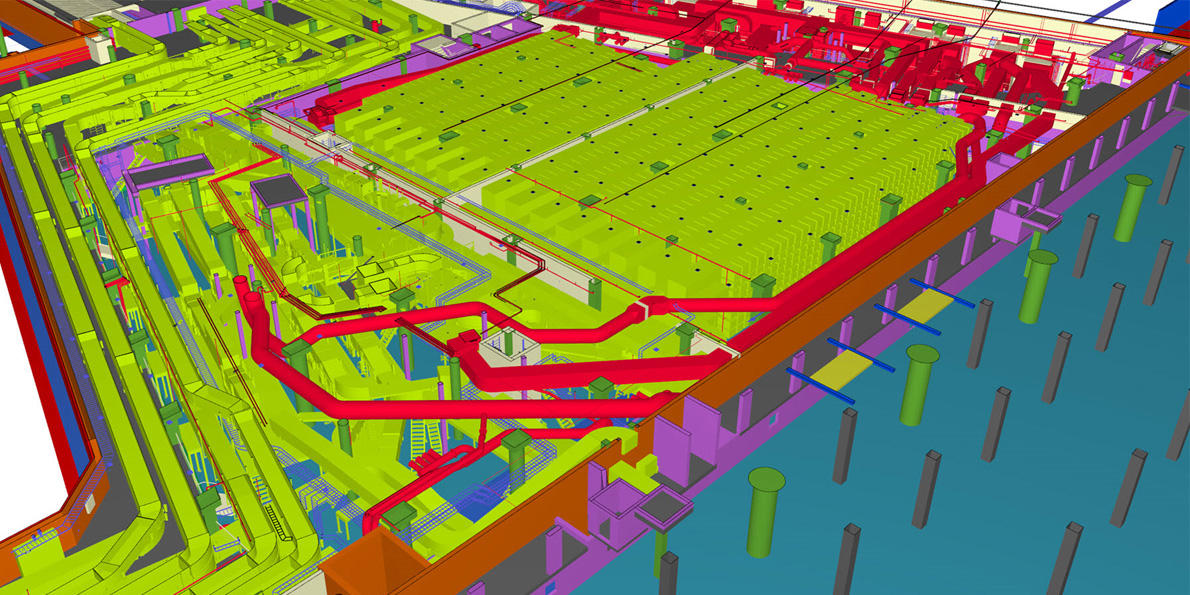Avinor, Oslo Airport T2 Project: Demonstrating the Power of Open BIM
Project
Published by:
Datasheet
Description
The Gardermoen Terminal 2 is not only a major construction project with over 100 contractors but also a functioning international airport in Oslo, Norway. For the main structural engineer Aas-Jakobsen, the location provides challenges as every day the builders have to ensure safety, airport security and smooth, regular operations while almost doubling the floor area of the building.

However, certain other project prerequisites are easier to work with, such as Avinor, the airport company and end client, demanding modeling from the contractors. Aas-Jakobsen often use geometry and reference models or existing buildings as a starting point for design. In Gardermoen, there are over a hundred reference models as practically everything is included from the architectural design, HVAC and electricity to, as this is an airport, baggage handling and hundreds of meters of airside terrain. The number of software solutions is huge.
After testing different software solutions Avinor chose Tekla Structures for the project, and according to the BIM Coordinator Bjørnar Markussen, they use it for everything except analysis. Markussen’s job is to push BIM forward and explore best practices. This is team work as 15-20 subcontractors have information production responsibilities and numerous others use the model information.
“This is a new way of working. Many of the subcontractors had not seen a model before, but now they use BIM for locating their survey equipment,” says Markussen and adds: “Open BIM and IFC file format are essential.”

IFC for the next 50 years
“To serve the market and passengers, we constantly rebuild the airport,” Markussen tells. The builders know that renovation is never far, and it will be easier and less expensive when there is accurate information about the existing structures.
The airport company Avinor not only requested models but also using IFC file format, as a model is not beneficial if it cannot be accessed. In the 2060s’ it may be challenging to find software that is compatible with the ancient proprietary file formats of the 2010s’, but because IFC is essentially a text based format, these models will still be accessible with some tool yet unknown to us.

The future is one reason why everyone modeling for Gardermoen T2 has to deliver IFCs. Another is that with IFC contractors and clients can choose their software quite freely, as the choice is not bound to compatibility with a particular file format, and still work together.
Collaboration, integration, innovation
Today, these future-proofed models are extensively used. With Tekla models the company can visualize and thus understand how to create reinforcement, extract documentation and create schedules, and models also benefit the contractors. The model information has been utilized for rebar production after creating of an application that connects to Tekla Structures using Tekla Open API.
One of the challenges is that the 250-300 employees modeling need to think somewhat aligned about BIM. However, this team has been modeling by and large everything within the airport, and according to Markussen quality assurance with models has achieved good results.

Taking advantage of BIM
Avinor had set goals to the project: To achieve better collaboration and more effective design processes, design and built correctly from the beginning, and, in the end, create better buildings. Aas-Jakobsen have benefited from certain choices, such as using Open BIM, and also managing changes with 3D models instead of 2D drawings with their limited information.
“We all know that a clash in a model is cheaper to solve than a clash on site,” says Markussen.
According to Markussen, the richness of model information, compared to using plain geometrical models, has been a question of survival for the Gardermoen Terminal 2. It is not just the builders who benefit from: The building information will be an asset for the airport company Avinor long after Aas-Jakobsen has moved on to new projects.
Type of Work
- Civil work












